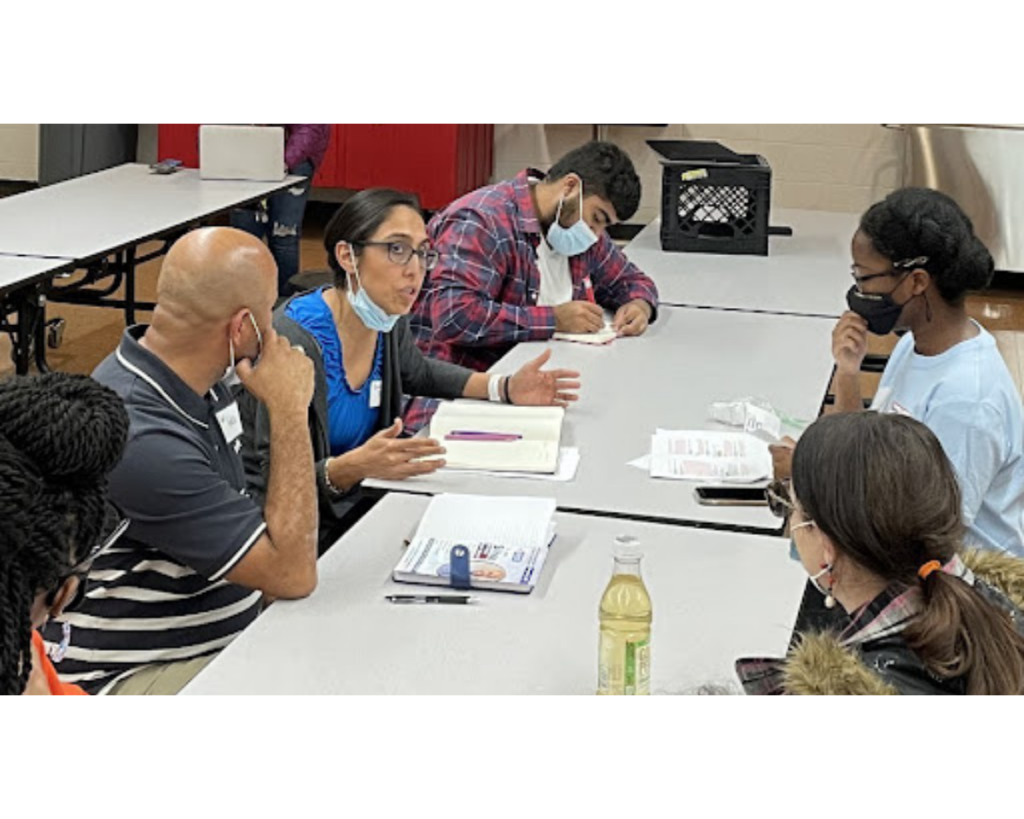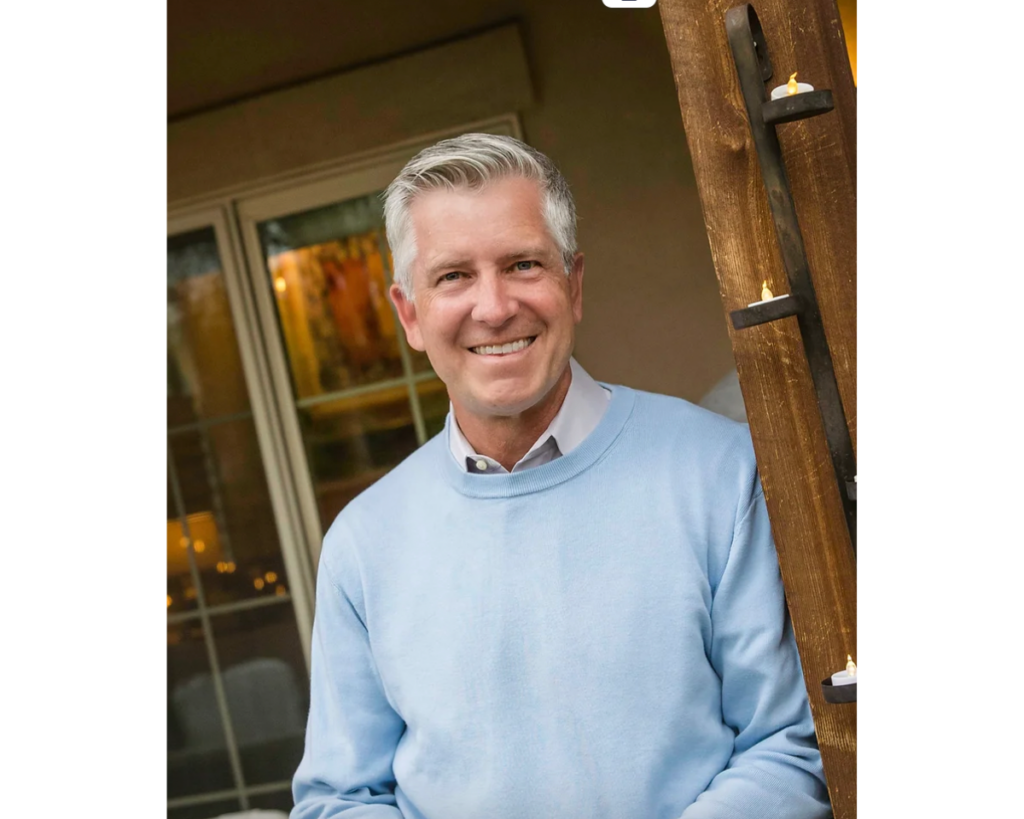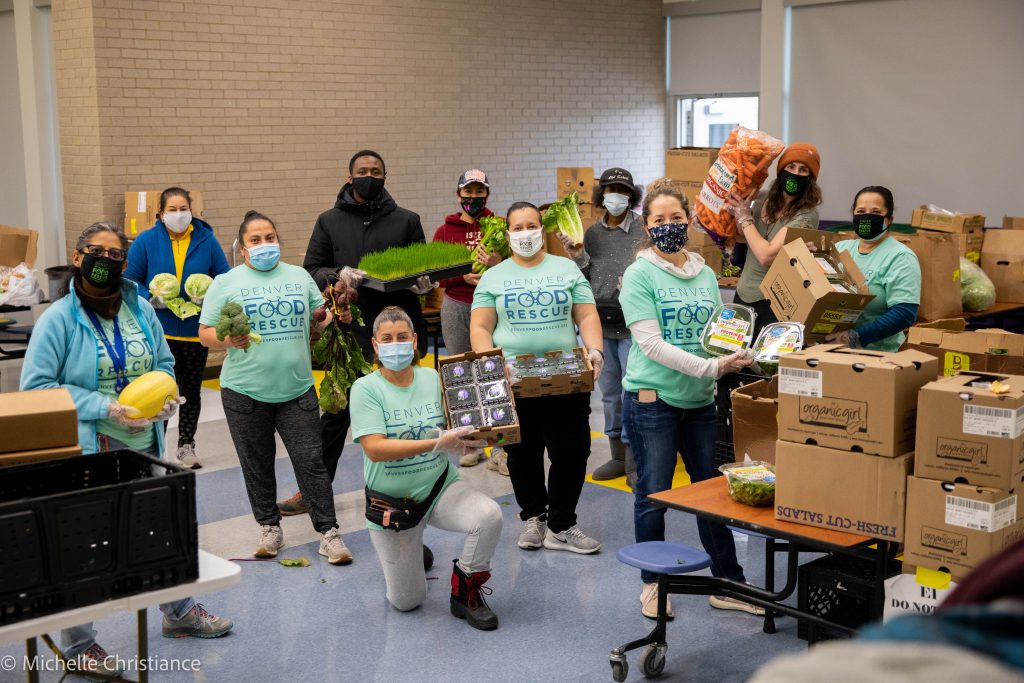A Denver-based youth activist group invited the 12 candidates running for four seats on the Denver Public Schools Board of Education to Montbello High School last week to hear how they plan to provide a more equitable education for Black, Brown and Indigenous students.
The basis for the group’s questions was a research report put together by three local advocacy groups. Among them was the host of the forum, Young Aspiring Americans for Social and Political Activism (YAASPA) — a community organization of local public school students focused on getting civically involved. The other two organizations involved were Transform Education Now and FaithBridge.
The report, “Community Views on Quality and Equity in Education,” to be released the week of November 8, analyzes how DPS families of color view equity in education.
The five-month research project included 200 community surveys and 28 interviews with families in English and Spanish.
“DPS families and students consistently talked about inequities in resources and support across schools in the district. They believe that DPS schools that serve wealthier families offer greater access to high quality teachers (high expectations, higher retention rates) and more challenging curricula (Advanced Placement, college prep),” reads the report.
“These schools are also perceived to provide a wider range of academic support (tutoring, technology, college counseling) and non-academic support (mental health, well-being, extracurricular activities).”
Ten of the 12 DPS board candidates attended the forum, which YAASPA called a “workshop” because the candidates answered questions through various games and activities facilitated by students.
For example, candidates gave short answers to questions about academic support for English Language Learners or reducing the school-to-prison pipeline between their turns in a game of tic-tac-toe, and when asked whether they believe all DPS students have adequate access to mental health resources, the candidates each wrote “yes” or “no” (all of them answered “no”) on a small whiteboard.
Some of the “system” changes the report calls for, based on what researchers heard from families, are the hiring of more educators of color, the incorporation of racial justice into academic curricula, and the expansion of post-secondary school options (opportunities other than college) for students.
“I know some schools look at, ‘Well, all of our students got admitted to college,’ and it’s like, ‘OK, what happened that next year?’” said Dr. Brenda J. Allen, chair of the board Denver-based education advocacy group RootEd, and one of the lead researchers on the equity report. “And how many of them actually went onto college, or how many of them do you have a sense that that’s really what they want to do?”
Allen also said there need to be people of color at every level in public education, not only teachers but also staff and administration, and that this sort of focus on race is not just about or for people of color — that everyone in DPS is responsible for acknowledging the district’s diversity of cultures.
The purpose of the report was to get a clear picture of what families of color felt they needed to see change within DPS. Major findings from the report included that families want to see DPS schools receive equal funding; that they would like more faculty and staff of color; and that they want mental health support “explicitly responsive” to students and educators’ needs.
“Let’s put it together and be on one accord so not one school is getting something better than the other school or the opposite,” one of the 92 interview participants said. “So just be on one page so the district is doing what’s best for all kids and not making one school shining and the other schools suffering.”
Researchers also heard from students who said they would like to see white educators taught how to have conversations about race, even if those conversations are uncomfortable.
One interview participant recalled a DPS staff member once saying they “don’t look at kids by their race” and view all students as simply human. They pushed back on this idea.
“I’m like, ‘Good for you. But I’m Brown, and I want you to know that I’m Brown, and I’m proud, and here’s why,” the interviewee said in the report. “First of all, you’re going to notice I have an accent, second, because I’m Brown. And third, I don’t look like you, and I want you to know who I am as an individual, having this Brown skin and this accent, and why is it that I have that. I think there’s a lot for me to tell you why I have what I have.’”
Another student said some subjects taught as academic courses at some schools, such as financial literacy, are only accessible to students at other schools through clubs or extracurricular activities.
Some DPS schools have up to 90% white faculty and staff, while 70% of DPS students are students of color.
“They describe the district as failing to acknowledge how racial inequality and educational inequity persist through inadequate funding, curricula, policies, resources, and hiring practices,” the report reads. “Brown, Black, and Indigenous students and families want DPS to acknowledge their historical and everlasting pain in the district, to address their struggles, and engage them in bringing about systemic change.”
During the candidate forum, YAASPA members asked pointed questions based on their own experiences in Denver schools.
“What does it matter if we spend 45 minutes looking at a suicide prevention program in schools, but teachers, I guess they’re not willing to work with us on our mental health?” said one YAASPA student who attends a northeast Denver high school.
“Or what does it matter if teachers have the indigenous land acknowledgement statement at the beginning of their slides, when they’re not teaching trauma informed for indigenous students? … I think just kind of band-aid solutions don’t work if the school’s culture isn’t really, really trying actively to end these problems.”
Another YAASPA student, who helped organize the event, said she would have liked the board candidates to go deeper into the issues she and her colleagues brought up, and are still unsure how much their voices were heard.
One issue the student mentioned was attendance policies that punish students academically for things over which they have no control.
“You’re saying that you understand that we have lives outside of school and we have to take care of things,” the student said, “but now we have to stay after school to make up for the time that you said was OK because we have our own lives.”
Whether there are family reasons, mental health reasons or others a student may have to miss class, she said, that student may still receive a grade penalty or administrative detention.
Allen also emphasized the importance of intersectionality — acknowledging and supporting students with multiple cultural identities whether those identities are racial, religious, gender or sexuality — but said racial equity specifically should still be a focus for whoever wins the upcoming school board election.
“Some of the challenges for racially minoritized students persist regardless of their family’s socioeconomic status, and by the way, all Brown, Black and Indigenous families aren’t poor,” Allen said. “We need an understanding of these kinds of complexities, and a wider range of post-secondary options.”




